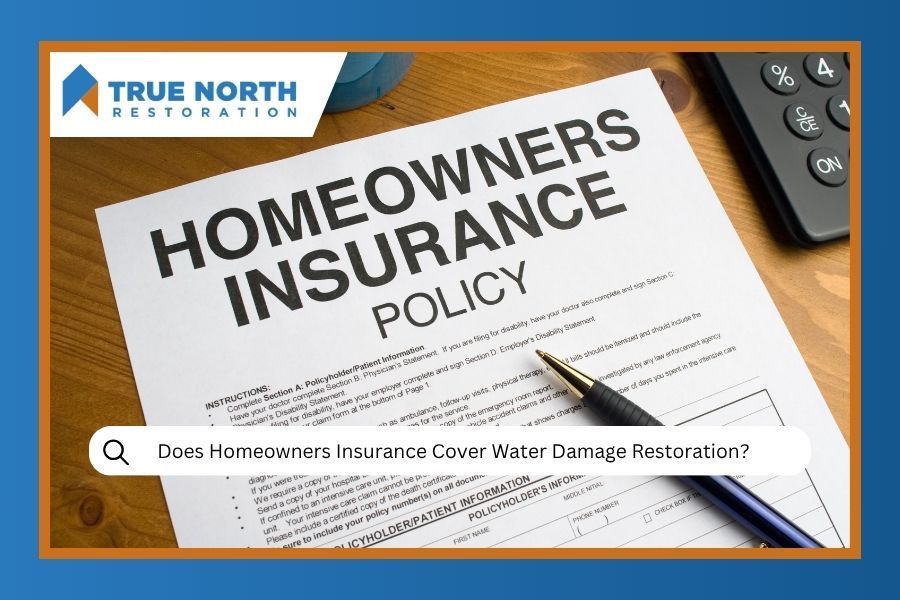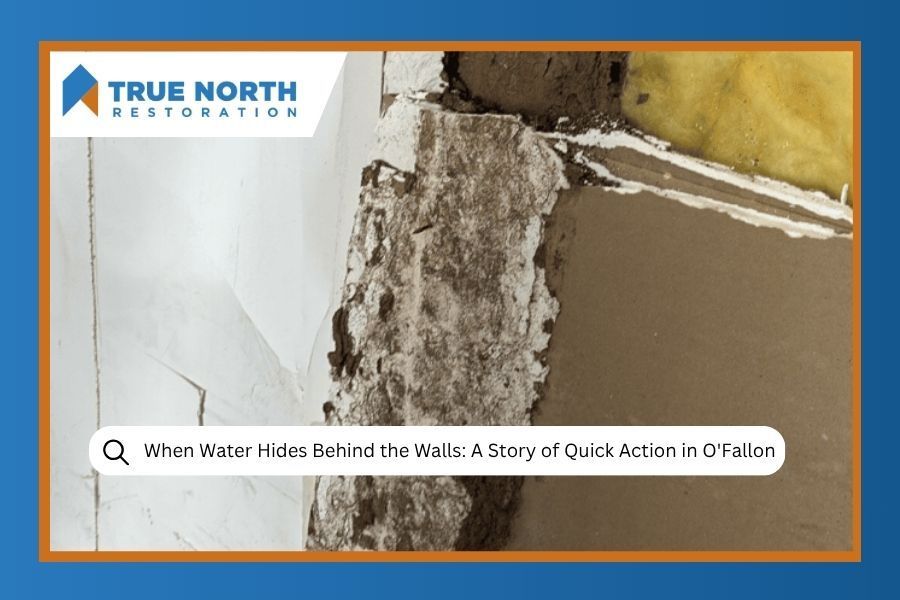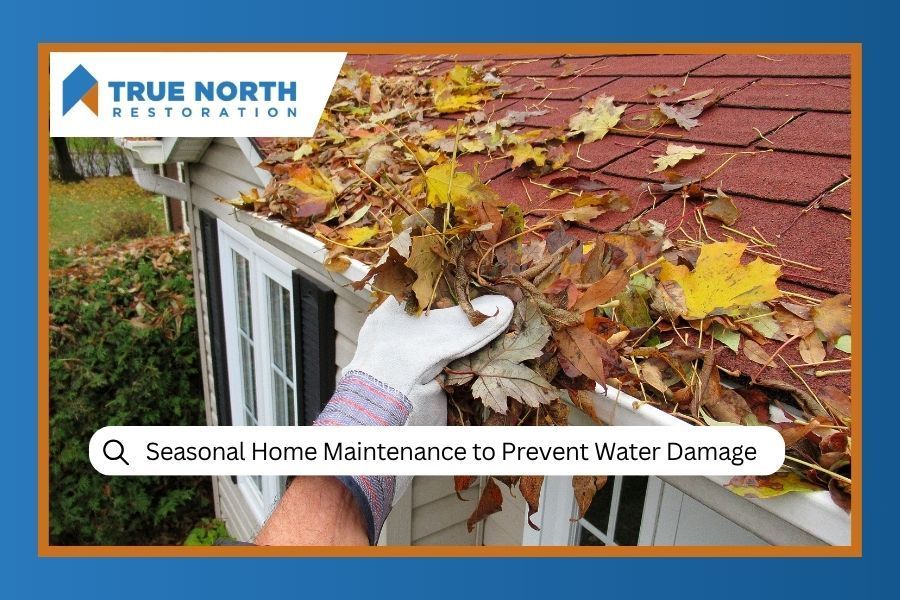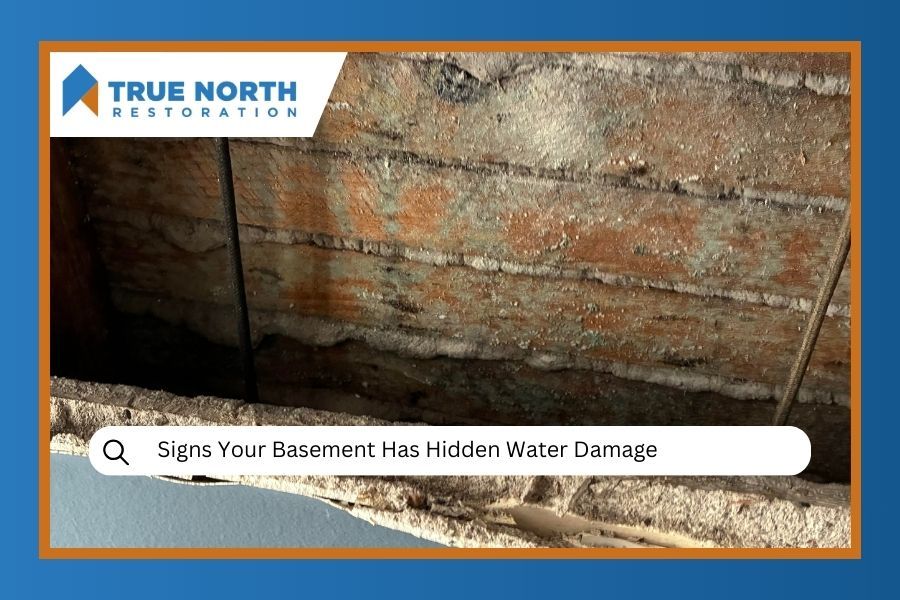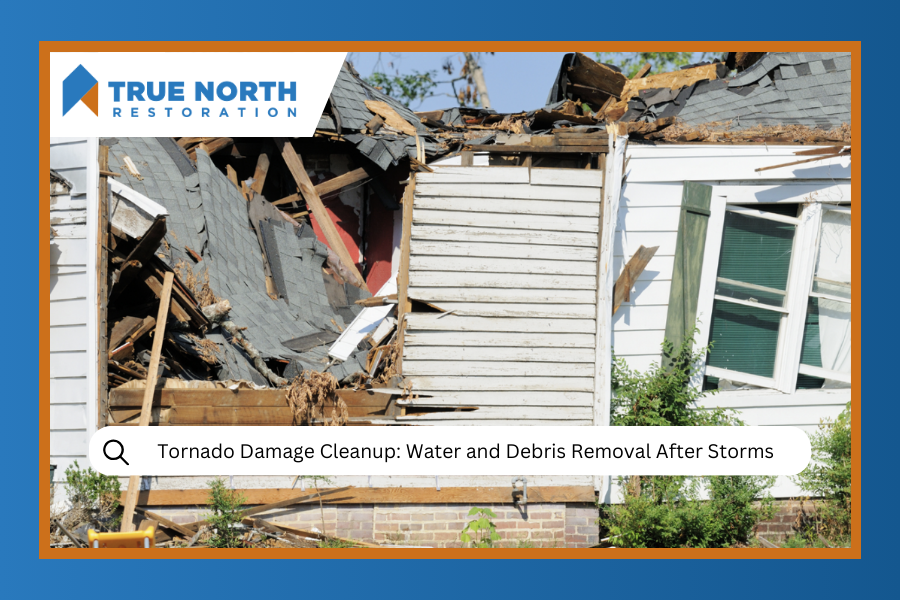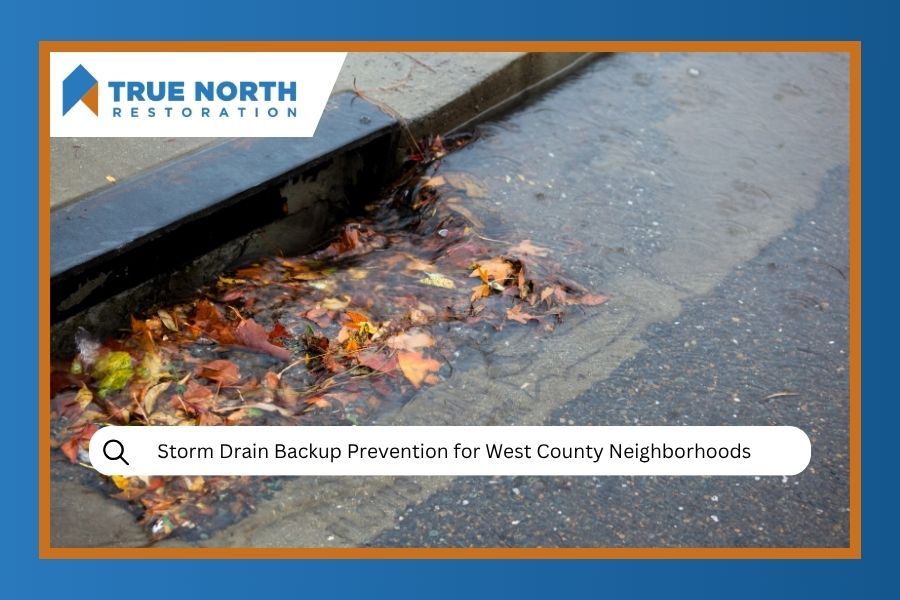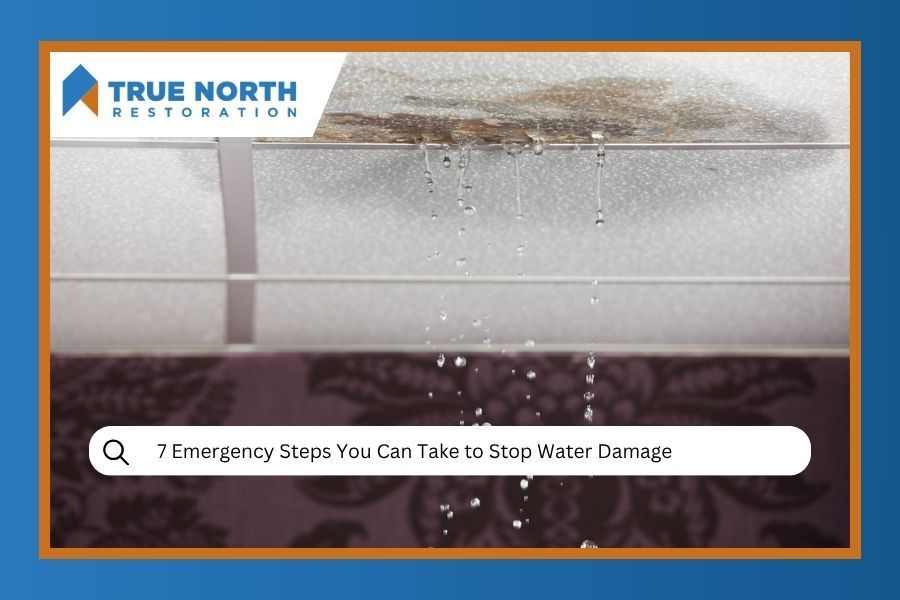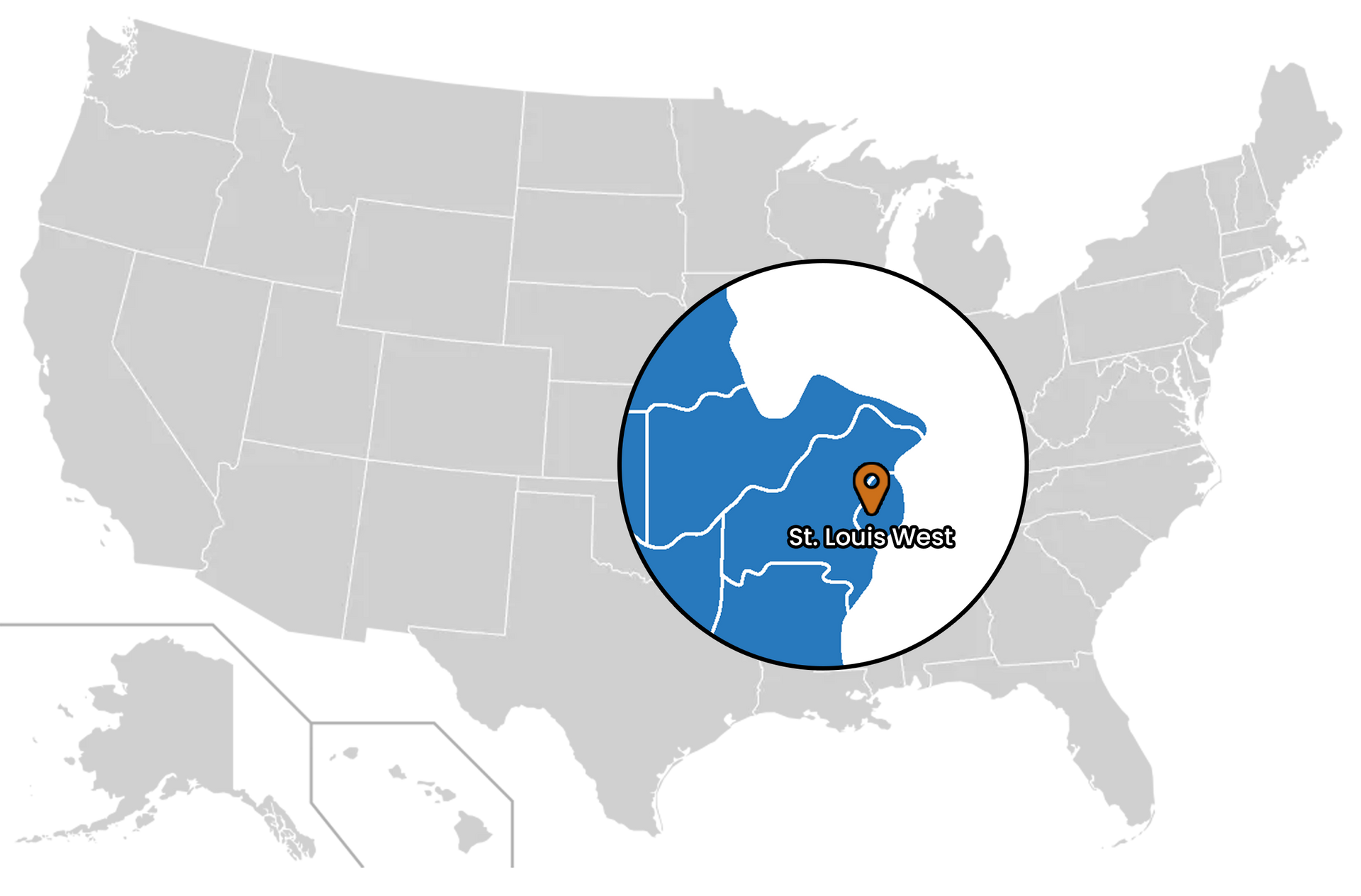Water damage strikes when you least expect it. One minute you're enjoying a quiet evening at home, the next you're standing ankle-deep in water wondering if your insurance company is about to become your new best friend or your biggest headache. If you're a Missouri homeowner dealing with water damage, you're probably asking the million-dollar question: "Will my insurance actually cover this mess?"
The short answer? It depends. But don't worry, we're here to walk you through everything you need to know about water damage insurance coverage in Missouri. At True North Restoration of Greater St. Louis West, we've helped countless homeowners in Chesterfield and throughout St. Charles County navigate these murky waters (pun intended). Let's break down what you can expect from your water damage restoration process and insurance coverage.
Jump to Section:
Understanding Water Damage Insurance Coverage in Missouri
Here's the thing about homeowners insurance and water damage: it's not as straightforward as "water damaged my house, so insurance covers it." Insurance companies are pretty particular about the how and why behind your water damage.
Most standard homeowners insurance policies in Missouri cover what's called "sudden and accidental" water damage. Think burst pipes, water heater explosions, or your washing machine deciding to take an impromptu bath break. These are the scenarios where water shows up uninvited and causes chaos quickly.
What's Typically Covered
Your Missouri homeowners insurance will usually step up to the plate for:
- Burst or frozen pipes(especially common here during our lovely Missouri winters)
- Water heater failures that flood your basement
- Appliance malfunctions like dishwasher or washing machine leaks
- Roof leaks from storm damage (not wear and tear)
- Accidental overflow from toilets, tubs, or sinks
- Water damage from firefighting efforts
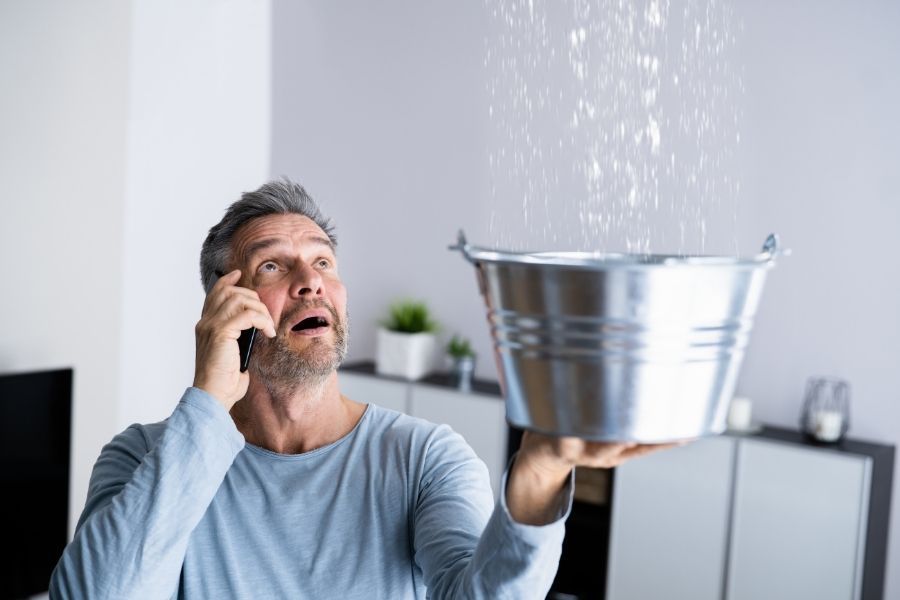
Storm-damaged roofs can cause significant interior water damage, which is typically covered by homeowners insurance when the damage is sudden and storm-related.
What's Usually NOT Covered
Now for the not-so-fun part. Insurance companies typically won't cover:
- Flood damage from external sources (you need separate flood insurance for that)
- Gradual leaks that develop over time
- Sewer and septic backups(unless you have specific coverage)
- Groundwater seepage
- Maintenance-related issues
Quick tip: If you're dealing with any of these situations, don't panic. Many issues can still be resolved with proper restoration techniques, even when insurance doesn't cover everything.
The Missouri Difference: What You Need to Know
Living in Missouri comes with its own set of water damage challenges. We're no strangers to severe weather, basement flooding, and those delightful winter freezes that turn pipes into ice sculptures.
Weather-Related Coverage
Missouri's weather patterns create unique insurance considerations. Spring storms can cause roof damage that leads to water intrusion, while winter freezes are notorious for bursting pipes. Most insurance policies will cover storm-related roof damage and subsequent water damage, but they might exclude flood damage from the same storm. Yes, it's as confusing as it sounds.
Basement Considerations
Since most homes in our area have basements, it's crucial to understand basement water damage coverage. If water enters through foundation cracks or floor drains due to heavy rain, that's typically considered flood damage and won't be covered by standard homeowners insurance. However, if a pipe bursts in your basement, you're usually in good shape coverage-wise.
Ready to get your water damage situation assessed? Our team is available 24/7 because water damage doesn't wait for business hours. Contact us today to understand exactly what you're dealing with.
Types of Water Damage and Insurance Coverage
Not all water damage is created equal in the eyes of insurance companies. Understanding these categories can save you a lot of headaches (and potentially money).
Clean Water Damage
This involves water from clean sources like supply lines, faucets, or rainwater (before it touches anything gross). Clean water damage is typically the easiest to get covered by insurance, assuming it meets the "sudden and accidental" criteria.
Gray Water Damage
Gray water comes from sources like washing machines, dishwashers, or shower drains. It's not pristine, but it's not hazardous either. Insurance coverage for gray water damage depends on the source and how quickly the damage occurred.
Black Water Damage
This is the category nobody wants to deal with. Black water includes sewage, toilet overflows with waste, or any water that's been contaminated with dangerous bacteria. Coverage for black water damage varies significantly between policies, and many standard policies exclude sewage backups entirely.
Understanding these categories helps because insurance companies often handle claims differently based on the water source. Different water types require different cleanup approaches and have varying insurance implications.
The Claims Process: What to Expect
Filing a water damage claim doesn't have to be a nightmare, but it does require some strategy. Here's how to navigate the process like a pro:
- Document Everything Immediately- Before you touch anything, grab your phone and start taking photos and videos. Document the water source, affected areas, damaged belongings, and anything else that looks relevant. Insurance adjusters love thorough documentation, and it can make or break your claim.
- Contact Your Insurance Company- Call your insurance company as soon as possible. Most insurers have 24-hour claim reporting lines. Be prepared to provide basic information about when the damage occurred, what caused it, and the extent of the damage.
- Mitigate Further Damage- Here's where it gets interesting. Your insurance policy likely requires you to prevent further damage, which means you need to start mitigation efforts immediately. This might include shutting off water, removing standing water, or setting up fans and dehumidifiers.
- Work with Professionals- This is where partnering with experienced restoration professionals becomes invaluable. We understand the insurance process inside and out, and we can help ensure your claim is handled properly from day one.
- Keep Detailed Records- Save all receipts for emergency repairs, temporary housing, and restoration services. Document all communications with your insurance company, including claim numbers, adjuster names, and conversation summaries.
- Schedule the Adjuster Visit- Your insurance company will send an adjuster to assess the damage. Be present during this inspection and point out all damage, even minor issues that might be overlooked.
- Review the Settlement Offer- Once the adjuster completes their assessment, you'll receive a settlement offer. Review it carefully and don't hesitate to ask questions or dispute items you feel are inadequately covered.
Understanding Your Insurance Policy Details
Let's talk about the fine print because, unfortunately, it matters. A lot.
Coverage Limits and Deductibles
Your policy will specify coverage limits for water damage restoration. Some policies have separate deductibles for water damage claims, while others use your standard deductible. Make sure you understand what you're responsible for paying out of pocket.
The Insurance Information Institute provides helpful resources for understanding your policy details and coverage limits.
Additional Living Expenses (ALE)
If your home becomes uninhabitable during restoration, your policy might cover temporary housing and living expenses. This coverage typically has time limits and spending caps, so understand these limitations upfront.
Personal Property vs. Dwelling Coverage
Your policy treats your home's structure differently from your personal belongings. Both should be covered for qualifying water damage, but they may have different coverage limits and deductibles.
Common Missouri Water Damage Scenarios and Coverage
Let's walk through some real-world scenarios Missouri homeowners face:
| Scenario | Typical Coverage | What Insurance Pays | What You Pay |
|---|---|---|---|
| Burst Pipe (Sudden) | ✅ Usually Covered | Water damage cleanup, structural repairs, damaged belongings | Deductible + pipe repair costs |
| Gradual Pipe Leak | ❌ Usually Not Covered | Nothing | All restoration and repair costs |
| Storm Roof Leak | ✅ Usually Covered | Interior water damage, roof repair if storm-related | Deductible only |
| Roof Leak (Wear/Tear) | ❌ Usually Not Covered | Nothing | All restoration and repair costs |
| Sump Pump Mechanical Failure | ⚠️ Sometimes Covered | May cover resulting water damage (policy dependent) | Deductible + pump replacement |
| Power Outage Sump Pump Failure | ❌ Usually Not Covered | Nothing | All restoration costs |
| Appliance Malfunction | ✅ Usually Covered | Water damage cleanup and repairs | Deductible + appliance replacement |
| Sewage Backup | ⚠️ Requires Add-On | Only if you have sewage backup coverage | Deductible if covered, otherwise all costs |
| Flooding from Rain | ❌ Requires Flood Insurance | Nothing without flood policy | All costs or flood insurance deductible |
Winter Pipe Bursts
Missouri winters can be brutal on plumbing. When temperatures drop below freezing for extended periods, pipes in unheated areas are at risk. If a pipe bursts due to freezing, your insurance will typically cover the resulting water damage, but not the cost to repair or replace the pipe itself.
Sump Pump Failures
Many homes in our area rely on sump pumps to keep basements dry. If your sump pump fails due to a mechanical malfunction and causes water damage, you might have coverage. However, if it fails due to power outages or being overwhelmed by flood conditions, coverage becomes murky.
Storm-Related Roof Leaks
When severe weather damages your roof and allows water to enter your home, insurance typically covers both the roof repair and resulting water damage. However, if the leak is due to poor maintenance or wear and tear, you're likely on your own.
Appliance Malfunctions
Water heater explosions, washing machine hose failures, and dishwasher leaks are generally covered as long as the damage is sudden and accidental. Gradual leaks that develop over time due to poor maintenance usually aren't covered.
Working with Insurance Adjusters
Insurance adjusters are people too (shocking, we know), but they're also trained to protect their company's interests. Here's how to work with them effectively:
Be Present During Inspections
When the adjuster comes to assess your damage, be there. Answer their questions honestly and provide any additional documentation they request. Don't be afraid to point out damage they might miss.
Understand the Difference Between ACV and RCV
Your policy might cover either Actual Cash Value (ACV) or Replacement Cost Value (RCV). ACV factors in depreciation, while RCV covers the full cost to replace damaged items. RCV is obviously better for you, but it might cost more in premiums.
Get Multiple Estimates
Insurance companies often want multiple estimates for restoration work. This is where having a trusted restoration company like True North makes a difference. We can provide detailed, accurate estimates that help ensure you get fair compensation.
Water Damage Restoration Process and Insurance
Understanding the restoration process helps you communicate better with your insurance company and ensures nothing falls through the cracks. Knowing what water damage looks like can help you spot problems early and document them properly for your claim.
Emergency Water Extraction
The first step is removing standing water as quickly as possible. This prevents additional damage and begins the drying process. Insurance companies appreciate fast action because it minimizes their total payout.
Structural Drying and Dehumidification
Professional drying equipment is essential for preventing mold growth and structural damage. This phase typically takes several days and requires monitoring moisture levels throughout your home.
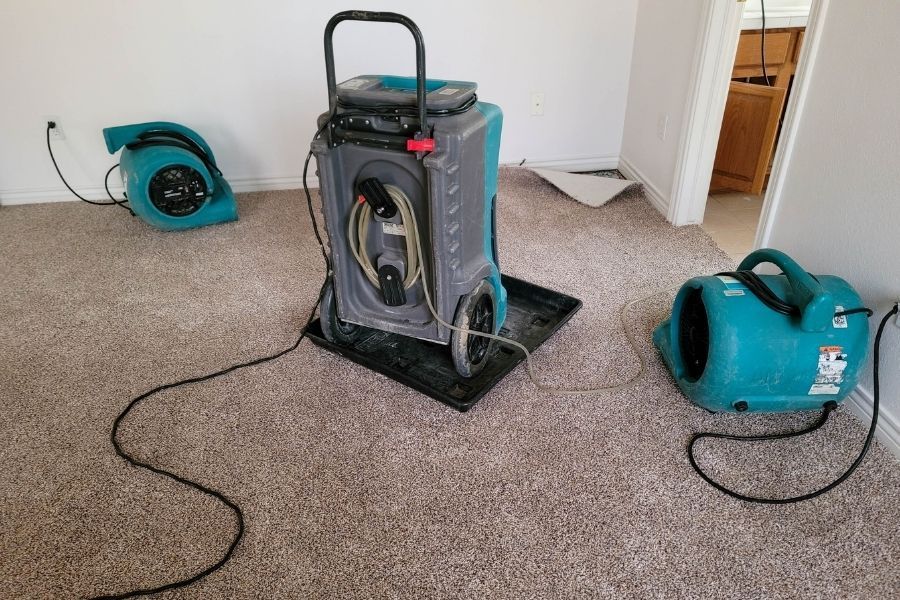
Professional drying equipment like air movers and dehumidifiers are essential for properly restoring water-damaged homes and preventing secondary damage like mold growth.
Cleaning and Sanitization
Depending on the water source, affected areas may need thorough cleaning and sanitization. This is especially important for gray or black water situations.
Reconstruction and Repairs
Once everything is dry and clean, reconstruction begins. This might involve replacing drywall, flooring, cabinets, or other damaged materials.
Prevention Tips for Missouri Homeowners
An ounce of prevention is worth a pound of cure, especially when it comes to water damage:
Regular Maintenance Checklist
- Inspect appliance hoses annually and replace them every 5-7 years
- Check your roof for loose or damaged shingles after severe weather
- Clean gutters and downspouts regularly to prevent water backup
- Test your sump pump before storm season
- Insulate pipes in unheated areas to prevent freezing
- Know where your main water shutoff is located
Seasonal Considerations
Winter Prep:
- Keep your home heated, even when you're away
- Open cabinet doors under sinks during extreme cold
- Let faucets drip slightly during deep freezes
- Consider installing a freeze alarm
Spring and Summer:
- Inspect and maintain your sump pump
- Check basement walls for cracks or signs of moisture
- Ensure proper drainage around your home's foundation
For more detailed prevention strategies, check out our comprehensive guide with 10 essential water damage prevention tips that can help you avoid insurance claims altogether.
Dealing with water damage right now? Don't wait – contact our emergency response team at (314) 557-3990. We provide 24/7 emergency services with a 45-minute response time throughout Chesterfield and St. Charles County.
When to Call Professionals
Some water damage situations are DIY-friendly, but many require professional intervention. Here's when to call in the experts:
Immediate Professional Help Needed:
- Standing water more than a few inches deep
- Water from questionable sources (sewage, flooding)
- Electrical hazards in wet areas
- Signs of structural damage
- Suspected mold growth
- Insurance claims requiring documentation
Need Professional Water Damage Help?
Don't let water damage turn into a bigger problem. Our IICRC-certified team is ready to help you navigate both the restoration process and insurance claims.
24/7 Emergency Response
We respond within 45 minutes throughout Chesterfield and St. Charles County, because water damage doesn't wait for business hours.
Insurance Claim Experts
We work directly with your insurance company, providing proper documentation and estimates to maximize your coverage benefits.
Professional Inspections
Get a professional assessment of your water damage. We'll help you understand what you're dealing with and your options.
Complete Restoration
From water extraction to final repairs, we handle the entire process so you can focus on getting back to normal.
Emergency Hotline:
(314) 557-3990
Available 24/7 for water damage emergencies in Chesterfield, St. Charles County, and West County communities
Why Professional Restoration Matters
Professional restoration companies bring expertise, equipment, and insurance knowledge that can save you time, money, and stress. We understand how to document damage for insurance purposes, use industrial-grade equipment for faster drying, and identify hidden damage that untrained eyes might miss.
For situations where water damage has led to mold growth, professional intervention becomes even more critical. Check out how we helped recover a mold-damaged kitchen and basement to see the difference proper restoration makes.
The True North Difference
When your world heads south with water damage, going True North means partnering with professionals who understand both restoration and insurance. We're locally owned and operated right here in Chesterfield, so we understand the unique challenges Missouri homeowners face.
Our IICRC-certified professionals handle insurance claims daily. We know what adjusters look for, how to document damage properly, and how to ensure your claim gets the attention it deserves. Plus, our 45-minute emergency response time means we can start mitigation efforts quickly, which often leads to better insurance outcomes.
Frequently Asked Questions
Does Missouri homeowners insurance cover water damage from burst pipes during winter freezing?
Yes, most Missouri homeowners insurance policies cover water damage from burst pipes caused by sudden freezing, including damage to your home's structure and belongings. However, the insurance typically won't cover the cost to repair or replace the actual frozen pipe itself, just the resulting water damage. The key is that the pipe burst must be "sudden and accidental" rather than due to gradual deterioration or poor maintenance. If you maintain adequate heat in your home and follow reasonable prevention measures, you should have coverage.
What's the difference between water damage and flood damage for insurance purposes in Missouri?
Water damage from internal sources (like burst pipes, appliance failures, or roof leaks from storm damage) is typically covered by standard homeowners insurance. Flood damage from external water sources (like rising rivers, surface water, or basement seepage from heavy rain) requires separate flood insurance through the National Flood Insurance Program. This distinction is crucial because many Missouri homeowners mistakenly believe their standard policy covers all water-related damage. If water enters your basement from outside due to heavy rain, that's considered flood damage and won't be covered without flood insurance.
How quickly do I need to start water damage mitigation to maintain insurance coverage in Missouri?
Most Missouri insurance policies require you to mitigate further damage "promptly" or "immediately" after discovering water damage. While specific timeframes aren't usually defined, insurance companies expect you to take reasonable steps within 24-48 hours to prevent additional damage. This might include shutting off water sources, removing standing water, and contacting restoration professionals. Failing to mitigate damage promptly could result in denied claims for secondary damage that could have been prevented.
Will my Missouri homeowners insurance cover the cost of professional water damage restoration services?
Yes, if the water damage is from a covered peril, most Missouri policies will cover professional restoration services including water extraction, structural drying, dehumidification, and mold prevention treatments. The coverage typically extends to both emergency services and the full restoration process needed to return your home to its pre-damage condition. However, you'll be responsible for your deductible, and coverage limits apply. It's important to work with restoration companies experienced in insurance claims to ensure proper documentation and maximize your coverage benefits.
Water damage doesn't wait for convenient timing, and neither do we. True North Restoration of Greater St. Louis West provides 24/7 emergency water damage restoration services throughout Chesterfield, St. Charles County, and West County communities. When disaster strikes, trust our IICRC-certified professionals to restore what matters most – your home and your peace of mind. Contact us at (314) 557-3990 for immediate assistance.



